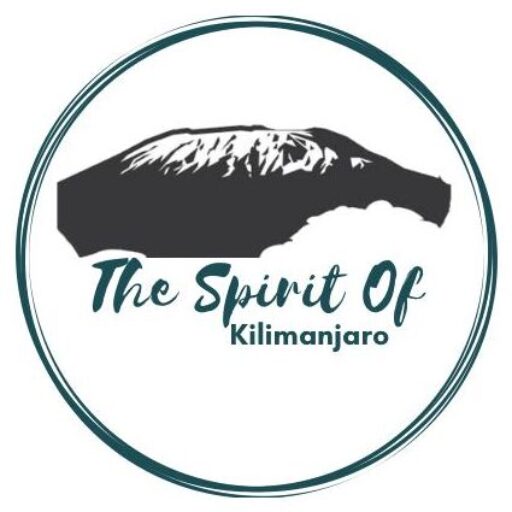Mount Kilimanjaro climbing routes success rates – choose your favorite and climb Kilimanjaro with Kilimanjaro 360.
Kilimanjaro Parking List
Bags & Backpacks for hiking
Clothing for Kilimanjaro
Headgear
Footwear
Hiking sleeping bags
Hands & Walking
Despite that of the “Seven Summits” – highest climbs on all seven continents – Kilimanjaro is taken into account the simplest , this expedition shouldn’t be taken lightly.
Packing your Kilimanjaro kit is one among the foremost important steps on the thanks to a successful climb. the online is filled with travel recommendations, however, most of them inevitably fail to elucidate why a particular piece of kit could also be a must-have while others may be left reception .
We have compiled our packing guide in order that even an entire novice could use it as a reference, though some recommendations could be obvious to seasoned mountain climbers. Also, you’ll find more information about Kili climbing during this article.
Most items mentioned during this article are absolutely necessary. Those considered comfort enhancers are marked as “optional”.
Useful tips for packing your Kilimanjaro kit
Here are some tips for a way to pack for climbing Kilimanjaro:
You can hire the specified gear on the spot once you arrive in Tanzania.
You can hire the specified gear on the spot once you arrive in Tanzania.
Those who don’t want to bring the entire bulk of their climbing equipment to Tanzania can always hire it on the spot from our rental shop. And it’s more pocket-friendly to rent from us than to shop for new.
For first-time climbers or anyone who doesn’t have their own climbing gear, renting may be a far more affordable choice than investing in the top-quality gear you’ll only use on just one occasion. We are the sole company within the region to supply our clients with gear from such brands because the North Face, Marmot, and Red Fox are straight from our own store, the most important within the Kilimanjaro region. All equipment is clean and in perfect condition as we renew our stock two times a year.
Avoid buying the most cost-effective gear.
There’s no got to spend a fortune on buying branded clothes and footwear, and yet inferiority items shouldn’t be an option either, regardless of how attractive they worth. After all, it’s your safety and luxury at stake. In today’s market, you’ll find many high-quality alternatives at affordable prices.
Clothing for Kilimanjaro
On Kilimanjaro, you’ll be trekking through four different climate zones (rainforest, moorland, alpine meadows, and Arctic desert). At the lower altitude of tropical rainforest, the weather is usually humid and hot, while within the summit zone it’s snowy, windy, and frosty. additionally, while the temperature is typically high during the day, it can drop to the melting point in the dark.
You should be properly prepared for all of those conditions.
The best brands of fleece jackets for expeditions to Kilimanjaro are The North Face, Red Fox, Mountain Hardwear and Patagonia.
Jackets
You will get to have three sorts of jackets for this trip:
Fleece jacket as an insulation layer.
Fleece jackets are often worn as separate pieces of clothing or over a trekking shirt. they’re great to possess within the dark once you are in the camp. A fleece jacket may be a must-have – you’ll be using it on most of your Kilimanjaro days.
Polartec-200 fabric is suggested over all others for Kilimanjaro expeditions. the simplest brands of fleece jackets are The North Face, Red Fox, Mountain Hardwear, and Patagonia. Hooded fleece jackets are better, as they supply extra warmth and luxury. We recommend taking 2-3 pieces for your trip.
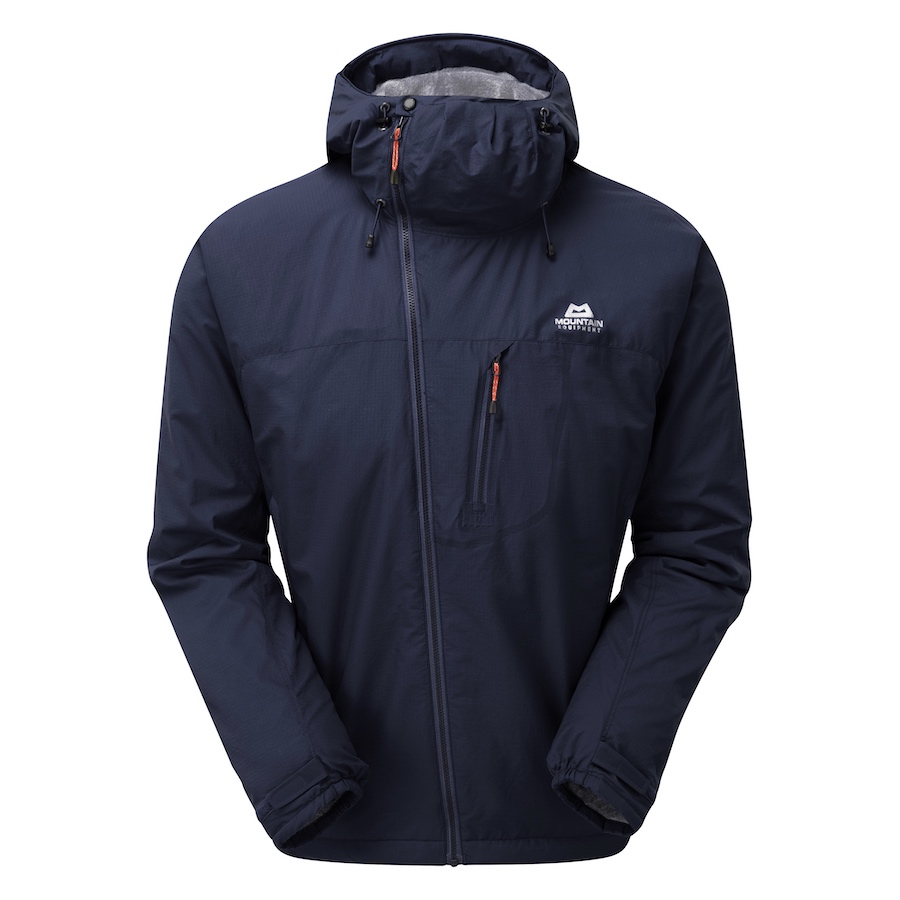
Warm jacket / Down jacket
A warm jacket is employed in camps to stay you warm during chilly evenings and for the summiting a part of your trip. it’s an absolutely necessary element of your kit.
A warm jacket shouldn’t be too heavy or too light and it should be comfortable to wear at -15°C / (5°F).
Make sure that your warm jacket may be a hooded one.
Another important thing in touch in mind is that the waterproof capacity of a down jacket. Rain and snow aren’t unusual on Kilimanjaro , therefore, we recommend choosing warm jackets with water-resistant outer material to guard you against minor precipitation. If heavy rain or snow starts, you’ll need a special rain jacket to supply extra cover.
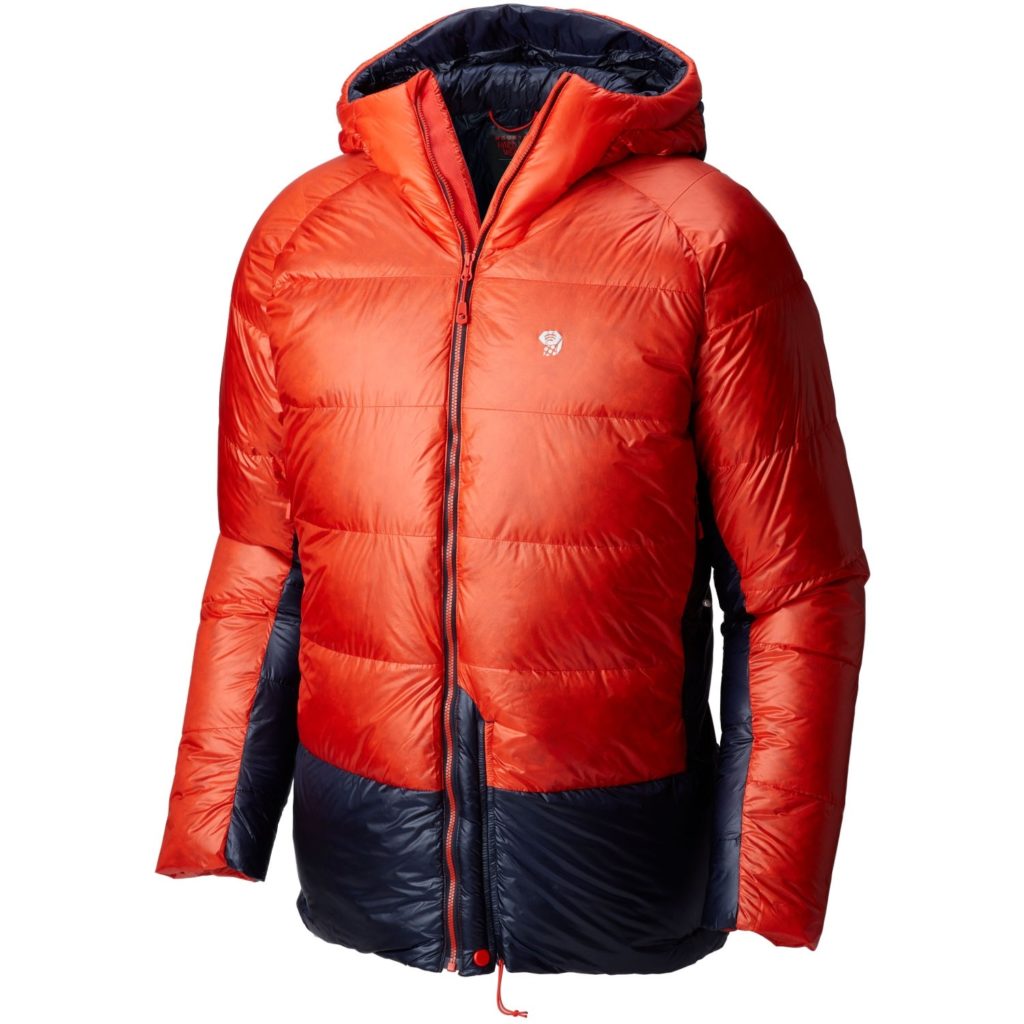
Membrane Hard-shell rain jacket (Gore-Tex or other)
A Hard-shell rain jacket will likely be necessary from the primary day of your trip (especially on the Lemosho 7-day program, where you’ll be ranging from 3,500 m/11,500 f), and will always be packed into your backpack for straightforward access.
This jacket is supposed to guard you against wind and drizzly rain before you reach the summit camp. On most of the Kilimanjaro days, it might be your third layer, after thermal underwear and a fleece jacket.
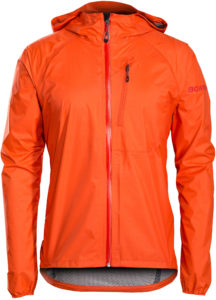
Trousers
You will need several types of trousers for this trip.
Trekking pants
Trekking pants of excellent quality are usually enough for a Kilimanjaro expedition. If you favor hiking in shorts, taking a pair of trousers is nevertheless needed for the upper elevation parts of Kilimanjaro and chilly evenings within the camps.

Membrane pants of rain pants
Membrane pants are needed for your Kilimanjaro adventure, and that they are especially useful during the season. When worn alongside the trekking pants, they supply excellent protection against winds and rains, making your overall experience better.
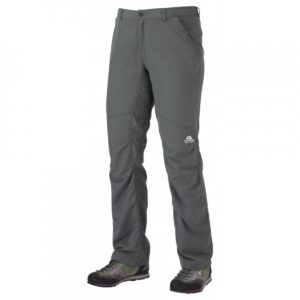
Warm trousers or ski pants
Warm trousers or ski pants are another must-have items on your packing list. they’re needed for the summiting a part of your hike when the weather is especially cold. These trousers should be water-resistant, lined with fleece on the within for warmth, and covered with good hardshell insulation for cover against wind and rain. Ideally, you ought to be ready to feel comfortable wearing these pants in temperatures under -15 CO/5°F. If you’re almost won’t too cold temperatures, you’ll even be especially happy to wear warm pants within the higher camps of Kilimanjaro.
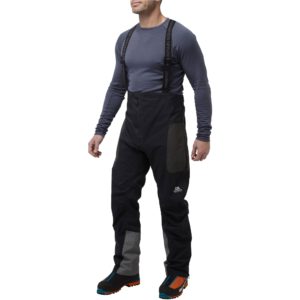
Hiking underwear and shirts
You will need 5-6 pairs of underwear for your Kilimanjaro adventure. additionally thereto, having 2-3 pairs of thermal underwear (base layer) is important for this trek – you’ll be wearing the primary pair on your usual days, and therefore the other on the summit night. Also, sleeping in thermal underwear is easier than without it.
The first set is often made from light synthetic fabric in order that it dries faster. The one used for the summiting should contain warmer, more natural components, e.g. wool.
Any branded thermal underwear is going to be perfectly suitable for your Kilimanjaro adventure.
As far as shirts for Kilimanjaro expeditions are concerned, having 3-4 short-sleeved and a couple of two long-sleeved shirts is important. Avoid cotton, because it is bad for wicking. The fabric should be light and ‘breathable’. Shirts made from a mixture of polyester and spandex or nylon are excellent.
Bags & Backpacks for hiking
High-quality bags are necessary for your Kilimanjaro trip. In short, you’ll need two sorts of bags: a daypack that you’ll be carrying yourself and a duffel bag which will be taken care of by a porter
Daypack
Your daypack will carry your day-to-day principles, alike as sunglasses, sunscreen, rain stole, flashlight, bottle with water, and snacks. It’s also the right place to put your appliances, for instance, your camera and smartphone.
Your daypack should be as light as possible. Leave heavier choices for other expeditions. Either, make sure that your daypack fits your rear comfortably. We recommend testing it on a lower hike before Kilimanjaro to make sure it’s suitable and comfortable for this adventure.
While choosing a backpack please pay attention to the following
- Your Kilimanjaro backpack should have a rain cover. Rain can start quickly, and it’ll be necessary to guard the contents.
- It should have side pockets for trekking poles, a water flask (bottle), and other items that you simply deem useful to possess in quick access.
A good backpack should even have a hip belt which is useful for reducing weight pressure. - Ideally, a daypack should be compatible with a camel bag/hydration bladder.
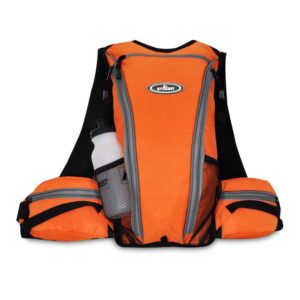
The best hiking daypacks are produced by Diamond.
A good backpack should also have a shoulder hip belt which is helpful for reducing weight pressure.
Duffle bag
A duffel bag is where you’ll keep most of your Kilimanjaro gear, like clothing, hiking boots (unless you’ve decided to place them on straight from the primary day), bag and more. A porter are going to be carrying it all the time. Typically, porters carry duffle bags on their heads, making it necessary to settle on soft models for his or her comfort. the entire distance covered by a porter together with your duffle on his head are going to be (depending on the route) around 40-50 km.
Your fully loaded duffel bag should weigh up to fifteen kg consistent with Kilimanjaro park regulations.
- Have a minimum of 90-120 liter capacity. Otherwise, you won’t be ready to slot in the whole Kilimanjaro kit.
- It should be made from waterproof materials.
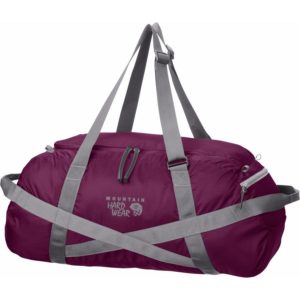
Along with a duffel bag we recommend taking several large dry bags and packing your gear inside separately. This approach will provide extra protection and can keep all of your gear dry just in case of heavy rains (sometimes the water can leak through the zippers straight inside to your duffle bag). you’ll hire an appropriate , water-resistant duffel bag from Kilimanjaro 360 before the beginning of your expedition.
Along with a duffel bag we recommend taking several large dry bags and packing your gear inside separately. This approach will provide extra protection and can keep all of your gear dry just in case of heavy rains.
Dry bag
Optional
Since rains aren’t rare on Kilimanjaro, taking a dry bag may be a good idea. Putting it inside your duffel bag or backpack can assist you keep all of your Kilimanjaro gear dry and fit use. If you opt to require one, confirm that it’s large enough to suit a bag and every one other gear.
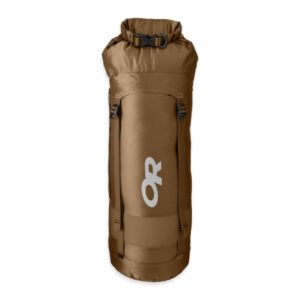
Water flask
A water flask is an absolute must. Unlike some poor-quality hydration bladders, it’ll not freeze in the dark. you’re required to drink a minimum of 3-4 liters of water a day, so a flask is one of the key items for this trip.
You should have 1-2 water flasks (one liter each) for your Kilimanjaro trip.
Apart from having a water flask, it’s also recommended to possess a thermos for decent tea/coffee. Though the guides normally carry one thermos each for the hikers to possess a hot drink on the way, taking your own means extra supply, which can be never superfluous on Kilimanjaro. More tea or coffee means more energy, which you’ll surely need.
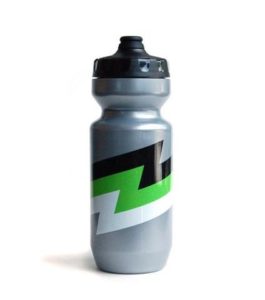
Camel bag / Hydration bladder
Optional
Hydration bladder (or “camel bag”) is very recommended for this trip.
If your daypack is compatible with a hydration bladder, having one will surely add comfort to your trek. you ought to be very cautious and choose only high-quality models. confirm that the pipe is insulated, otherwise, it’d freeze on the summit night.
High-quality hydration bladders retail at USD 30 and more, but this is often an honest investment.
1.5 and 2-liter variations are going to be perfect for your trip.
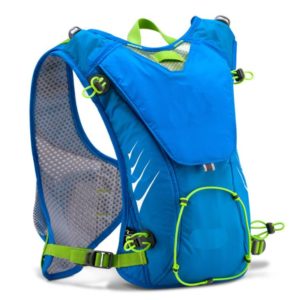
Travel bag organizers
Optional
A highly recommended item that creates it comfortable to urge all of your gear sorted inside a duffel bag. Also, using such organizers is useful for keeping dirty and wet clothes aside from the clean ones.
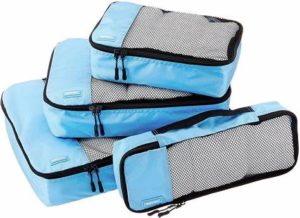
Footwear
Footwear is one among the foremost important items on your Kilimanjaro pack list. this is often where you ought to be particularly attentive and selective. Choosing your hiking boots and/or sneakers may be a task of supreme importance. A wrong choice here may result in broken toenails, corns and blisters.
For this trip you’ll need high-quality hiking boots, trekking sneakers (optional) and trekking socks.
Choosing appropriate hiking boots is perhaps of utmost importance. There are many options on the market, and sometimes it’s hard to seek out the proper one.
Ideally, your hiking boots should meet the subsequent criteria:
- Boots should have good ankle support.
To avoid getting injured confirm to settle on a strong model with sufficient ankle support. - Boots should be of medium weight.
Avoid buying boots that feel very heavy, it’ll affect your comfort and make your feet quickly tired.
Of course, your boots should be waterproof to stay your feet dry all the high to the highest . it’s especially important within the summit area if you climb Kilimanjaro during the season . Wearing high-quality trekking socks will provide extra protection, so it’s always recommended to possess a pair.
Preferably, laces should get fixed to the speed hooks for better comfort and protection. it’s critically important to interrupt in your boots before the beginning of your Kilimanjaro trip. Taking a pair of brand-name new boots will cause discomfort, sore soles and calluses. Therefore, it’s highly recommended for you to wear your boots for about 5-6 days before the beginning of the expedition. you ought to take a minimum of one long hike to urge them ready.
It is critically important to interrupt in your boots before the beginning of your Kilimanjaro trip. you ought to take a minimum of two long hikes to urge them ready.
The brands of hiking boots that Kilimanjaro 360 recommend include: La Sportiva, Zamberlan, The North Face, Asolo, Salomon and Scarpa. Any of those brands are going to be perfect for Kilimanjaro. In our Kilimanjaro rentals shop you’ll find over 100 pairs of high-quality boots, all ideal for the Kilimanjaro trip. Hiring boots from us will cost you simply USD 45 per trip, which is far cheaper than buying new (around USD 200-400), to not mention that bringing your own boots means extra weight for your luggage. So, if you don’t decide to hike actively after Kilimanjaro, it’ll be an honest option.
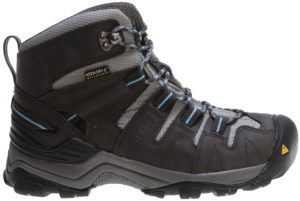
Sneakers
Optional
On some routes the primary days of your hike won’t be very steep, making it possible to use simple trekking sneakers rather than boots. On the subsequent days, after arriving at your camp, you’ll probably want to require off your hiking boots and let your feet rest. That’s when sneakers might are available handy. They’ll be perfect for exploring the camp surroundings and maneuvering between your tent and dining tents.
Zamberlan, La Sportiva, The North Face, and Scarpa all make excellent trekking shoes.
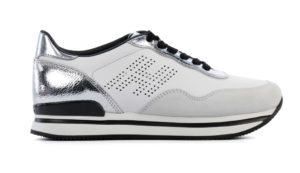
Trekking socks
Trekking socks are a requirement on hikes like this. don’t pack cotton socks, as they’re going to retain sweat and provides you with blisters.
In contrast, woolen socks are an honest option for Kilimanjaro – they’re going to ensure fast and effective. wicking. A brand to settle on is Bridge dale.
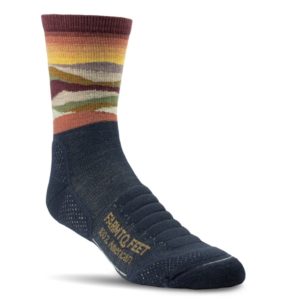
Thermal socks
Optional
Thermal socks are optional but highly recommended, especially for climbs during the summer months. There are tons of brands available on the market. those with flat seams, not made from cotton, will suit perfectly! Wool may be a great alternative.
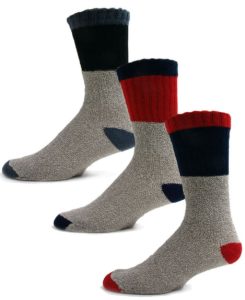
Gaiters
Optional
The use of gaiters on Kilimanjaro isn’t mandatory, but during the season they’re absolutely indispensable to stop mud, snow or pebbles from getting inside the boots.
Hikers often think that gaiters are of little value. And yet, they are doing help to stay your trekking pants and boots clean during the trek, making your clothing more pleasant to place on. Also, the gaiters help to guard your costlier membrane and trekking pants from the edgy rocks which are ubiquitous on Kilimanjaro.
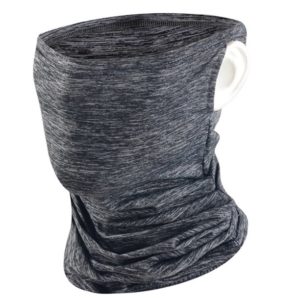
Headgear
Like other trekking equipment categories, Kilimanjaro headgear has both mandatory and optional items.
Sun hat
A sun hat may be a must wear your packing list. Ideally, it should even have a neck cover. This headgear will protect your face from sunburns and overheating.
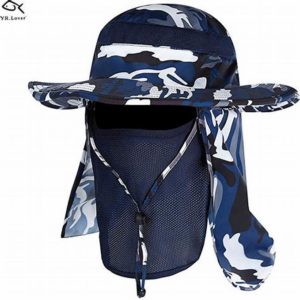
Beanie
Taking a beanie is important for this trip.
At higher elevation you’ll start feeling cold, so so as to stay your head and ears warm you’ll need an honest beanie. It should be warm enough for the low temperatures and snowy conditions of the summit area.
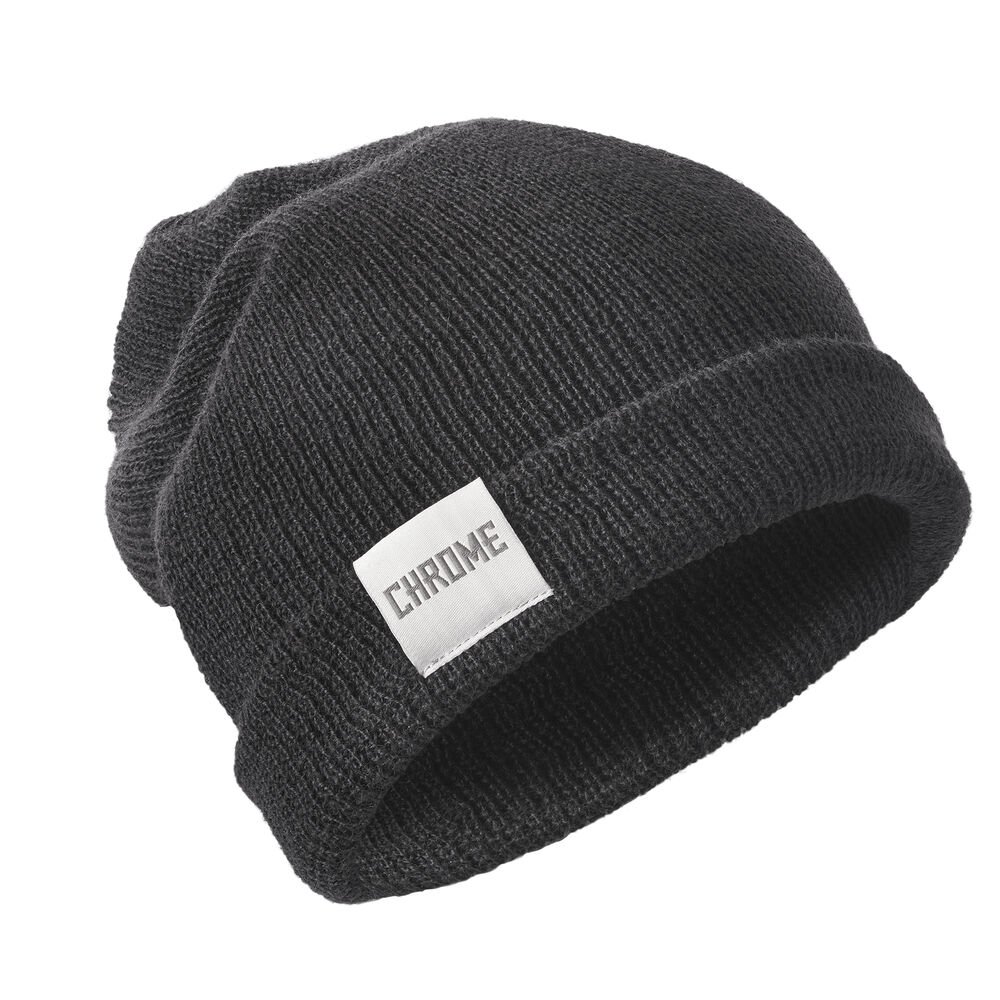
Balaclava
Optional
Balaclava may be a handy solution for hikers who are particularly vulnerable to cold temperatures. A woolen balaclava will protect your chin, nose, cheeks and forehead from the wind on the summit night. it’s unlikely that you simply are going to be using it anywhere else.
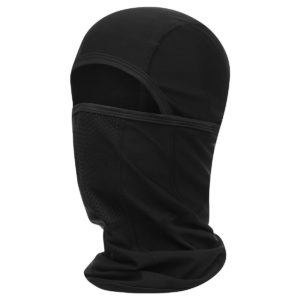
Neck warmer
Optional
Many climbers find neck warmers very useful as they supply good protection to your neck and face if it gets very cold. It’s also an honest solution against dust.
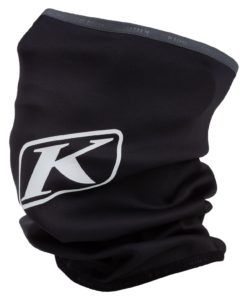
Sunglasses
When it involves sunglasses, there are some key points to concentrate to. Firstly, sunglasses should provide good UV protection. At the elevation of 6,000 m above the ocean level UV radiation is far above stumped level.
Secondly, when choosing sunglasses you ought to remember that snow within the summit area reflects light, thus putting extra strain on your eyes. Once near the summit, you ought to put your sunglasses on albeit it’s cloudy. Otherwise, you would possibly develop a condition referred to as snow-blindness. it’s very dangerous and should cause permanent damage to your vision. Thus, confirm to settle on a high-quality, mountain model with 3 or, better, 4-level of UV protection.
Together with other required gear, it’s always possible to rent summit glasses at a competitive price in our Kilimanjaro rental shop.
The best sunglasses for a climbing expedition to Kilimanjaro are by Julbo Explorer and Oakley.
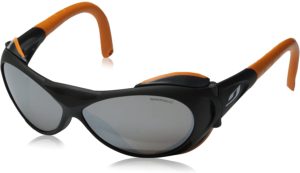
Headlamp
You can not hike Kilimanjaro without a headlamp.
Firstly, you’ll need it for traveling the camp after sunset when finding your tent can become quiet task. Besides, if you opt to travel to the toilet in the dark without a headlamp on you’ll encounter the tent ropes.
Secondly, a headlamp is going to be necessary during the summit. Normally, hikers start in the dark getting to reach Uhuru peak by sunrise. So a headlamp is going to be an excellent help to ascertain the trail.
Please concentrate on the subsequent points while choosing a headlamp for your trip:
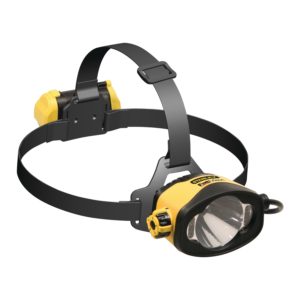
Good trekking poles will minimize the impact of a lengthy hike on joints, since part of your weight will be moved upon your hands and back, relieving your knees and other joints from extra stress.
While deciding on the trekking poles for your Kilimanjaro hike pay attention to the following:
- Check the standard of sunshine. The brighter your headlamp, the more suitable it’s for the trek. Optimally, the sunshine output should be above 90-100 lumens and therefore the beam distance should be a minimum of 40-50 m.
- Buy good batteries. Ideally, the active mode should be around 30 hours. Otherwise, don’t forget to require spare batteries.
Finally, your headlamp shouldn’t be too heavy. Since it’s worn on the top, it should be relatively light. Thus, don’t consider anything above 120 g. - Avoid buying headlamps with rechargeable batteries. Their battery life is far shorter, and, most significantly, there are not any power outlets on Kilimanjaro to recharge them.
A headlamp are going to be necessary during the summit. Normally, hikers start in the dark getting to reach Uhuru peak by sunrise.
Trekking poles
Trekking poles are a highly recommended item on your Kilimanjaro packing list, not only because it’s a matter of comfort, but due to health concerns.
High-altitude trekking may be a strenuous activity that puts great strain on your knees and joints. The average daily hiking leg on Mt Kilimanjaro is 7-10 km which takes 4-8 hours to finish. The terrain is rugged, and, at some points of the trek, rocky. this is often where the trekking poles will assist you to stay balanced, adding two extra supporting points. The hikers also say that the trekking poles are very helpful on the summit night, especially when fatigue takes over them.
That is why some people that don’t use trekking poles complain about sore legs during and after the trip.
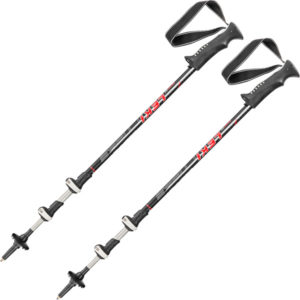
Good trekking poles will minimize the impact of a lengthy hike on joints, since a part of your weight is going to be moved upon your hands and back, relieving your knees and other joints from extra stress.
While choosing the trekking poles for your Kilimanjaro hike concentrate on the following:
- Ideally, the load of your trekking poles should be around 400 g – not too heavy and not too light. Durability also matters – they ought to be ready to endure lengthy hikes.
- As for materials, aluminum is that the most optimal option which will make the poles durable. Also, confirm to see the grip materials – during a high-quality pair of poles grips are made from cork or foam. Cork is usually a far better option because it feels easier within the palm and doesn’t damage the palm skin.
- Also, remember that the trekking poles should match your height. aside from adjustable models, there are special models for tall people and for teenagers.
Black Diamond is understood to possess the best collection of trekking poles for hiking.
Good trekking poles are exactly what you would like to attenuate the impact of a lengthy hike on your knees and joints.
Gloves
You will need two sorts of gloves for this adventure – light inner gloves and warmer outer gloves for the summit night. Both sorts of gloves are essential for your Kilimanjaro trip.
Lightweight gloves are meant to stay your hands warm ranging from the second day of your expedition. Most hikers wear them till the summit camp then placed them on their outer gloves. Inner gloves should be made from good-quality materials, the simplest options being wool, Polartec, or synthetics. Avoid buying cotton gloves – they’re not suitable for Kilimanjaro due to their poor wicking capacity.
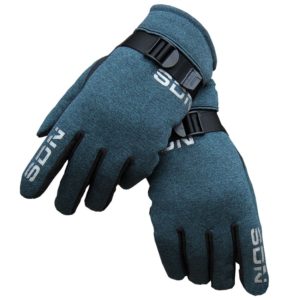
You will also need warm gloves or mittens for the summit night. they ought to be warm and waterproof, while comfortable to use. Mittens are better – the summit usually takes around eight hours, and every one the time you’ll be holding trekking poles in your hands. due to that, it’s imperative to stay warm at -15°:C/ 5°F (lowest temperature within the summit zone).
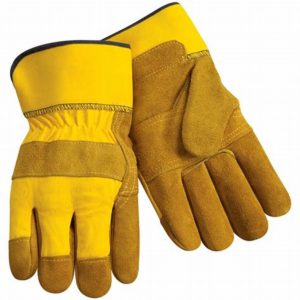
Sleeping bag for Kilimanjaro
No matter which season you’re climbing Mt Kilimanjaro, a bag is going to be necessary for any camp and on all routes. Though some might imagine that it’s warm in huts on the Marangu route, the very fact is that they’re not heated, making it your responsibility to stay warm in the dark.
- Your bag should be warm
To begin with, your sleeping has three temperature levels.
“Comfort level” means the temperature at which you’ll sleep in your bag comfortably with only your thermal underwear on.
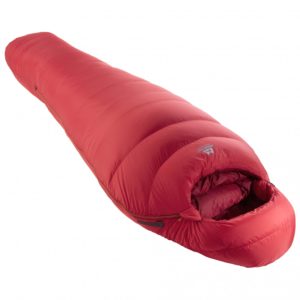
“Limit level” stands for the temperature once you can use your bag while wearing some layers of additional clothes. Sleeping bags shouldn’t be utilized in conditions beyond that temperature limit.
“Extreme level” means the temperature when a bag is often used as an emergency measure to save lots of a climber from hypothermia until the emergency services arrive.
It is very cold within the upper camps of Kilimanjaro in the dark. Thus, the comfort level of your bag should be a minimum of -10°C / 14°F. If you’ll get a bag warmer than that, you won’t regret it! nobody has ever complained that it had been too hot in his or her bag.
Ideally, your bag should have a hood to hide your head for better sleep in the dark.
Our Kilimanjaro recommendation is Lamina Z Blaze ( Comfort Level -15°F / -26°C) by Mountain Hardwear and therefore the North Face sleeping bags. Because sleeping bags are quite large in size, you’ll hire one in our Kilimanjaro rentals shop upon arrival. We regularly renovate our stock, ensuring that our hikers have access to the simplest sleeping bags.
Sleeping bag liner
Optional
A bag liner will add extra warmth on the ultimate days of your climb. Mummy-shaped liners are better than rectangular ones. Either a fleece or an insulated liner is going to be great for your Kilimanjaro hike.
A good liner can add from 3 to 8°C to your bag comfort level, which enables you to require your own bag if it doesn’t match the -10°C comfort level requirement.
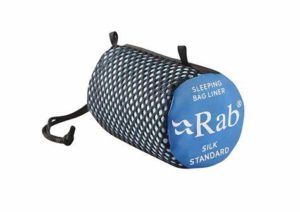
Inflatable pillow
Optional
An inflatable pillow is going to be of great use for those that like reading during a tent. At an equivalent time, however, you’ll put your backpack or some clothes under your head to form an improvised pillow.
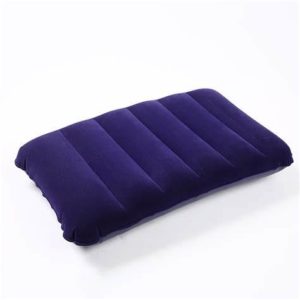
Personal & Medical items
Optional
Wet wipes will help maintain personal hygiene if you made the decision to climb Kilimanjaro without hiring a private portable shower. Take two packs – put a little one into your daypack to use on the way, and a bigger one will attend the duffle bag to be used for the evening hygiene.
Don’t ditch suncream. Without it, the open parts of your hands and face will easily get sunburnt.
Even though the guides will have a medical kit with everything needed for common conditions like nausea, headache, stomachache, etc., you ought to definitely bring any personal medication you’ll require. Remember that a number of the pills that you simply can easily stock the house countries could be unavailable in Tanzania.

Gadgets
Personal & Medical items
Optional
Some of the gadgets which will be useful on your Kilimanjaro trip are:
Camera
The scenery opening from Mt Kilimanjaro is actually spectacular! Taking great pictures is one among the most reasons people check in for this trip. you’ll take a smartphone with an influence bank or a Go-Pro camera with spare batteries to capture the foremost fantastic moments of your adventure.
Power banks
As said above, If you’re taking any gadgets with you, taking an influence bank may be a must. There are not any power outlets on Kilimanjaro and it’s the sole thanks to keep your smartphone, e-reader or other devices charged.
E-book
For those that wish to read before getting to sleep, it’s a must have item on the packing list.
Mp3 Player
This is what is going to make your Kilimanjaro adventure truly great, especially on the summit night. Your favorite songs will definitely continue your spirits and make the moments on the highest of Africa even more wonderful.
Gear and equipment to rent
If Kilimanjaro isn’t your first mountaineering experience of summits above 5,000 m, then you almost certainly have already got most of the equipment needed. Yet, for many, Kilimanjaro is their first big climb. Therefore, you ought to seriously consider hiring a number of the things on the spot as to not spend a fortune on equipment.
Buying the entire Kilimanjaro kit is probably going to cost you quite thousand dollars, increasing the general budget of your adventure. Hiring everything that you simply need for the hike will cost around USD 250-300. If Kilimanjaro is your once-in-a-lifetime venture and you’re unsure whether you’re getting to continue climb, then hiring are going to be a cost-saving solution.
If Mt Kilimanjaro is merely the primary hiking adventure on your bucket list and you propose to explore other mountains, then buying your own gear isn’t a nasty idea. Remember, however, to settle on an appropriate luggage tariff when buying air tickets, because the whole shebang is probably going to weigh 15-17 kg. Therefore, albeit you’re arriving together with your own gear, hiring a number of the heaviest and most cumbersome items (such as a bag , down jacket or trekking poles) could also be an honest idea, especially if you’ve got a visit to Zanzibar or a safari after the hike. Most local airlines operating Zanzibar flights have a 15 kg luggage limit, which can surely not be enough to pack all of your hiking and usual travel luggage.
Frequently Asked Questions
Depending on the route, a typical Kilimanjaro adventure takes from six to eight days. Longer trips are always better due to acclimatization transition. Seven days on Kilimanjaro usually sufficient for the overwhelming majority of hikers in average physical shape. you’ll always add extra days to your itinerary for better acclimation.
The weather on Mt Kilimanjaro depends on the season. Summer months are mostly dry and chilly, spring and autumn through early winter are rainy, and middle and late winter is sunny, hot and dry.
Because of that, the foremost popular climbing seasons on Kilimanjaro are August-September, the New Year holidays, and January through early March.
You may examine the weather on Kilimanjaro and therefore the best time to climb in our article
Less oxygen within the air is what causes problems with sleep at high altitudes. In most cases, if your acclimatization transition goes well, you won’t have any issues together with your sleep in the dark . In other words, following the golden rules of high-altitude acclimatization will make your sleep better.
Here may be a recap of them:
Hike slowly! Ideally, your pace should be twice slower than normal walking pace.
Choose longer routes. 7-day climbs through Lemosho, Machame and Rongai are enough for many hikers.
Do not ignore acclimatization hikes. Following the “go high, sleep low” principle will help your acclimatization.
If, however, you’ve got a headache in the dark or it’s difficult to nod off , confirm to inform your guide and he will offer you the required pills.
Trekking poles are highly recommended for each climbing program. Climbing Kilimanjaro puts much strain on your knees, joints and feet, and trekking poles are wont to alleviate that stress. They also provide stability and rhythm to help trekking through rough terrain.
Types D and G (British) with standard voltage of 230 V are used in Tanzania.
Practically, thanks to high elevations, there are not any malaria-carrying mosquitos on Kilimanjaro. Also, anti-malaria pills are reported to impact the hiker’s health condition on Kilimanjaro during a negative way, while, worsening the symptoms of high-altitude acclimatization.
However, the danger of infection is usually present on the lower elevations before or after Kilimanjaro, also within the National Parks on safari. due to that, we recommend consulting your physician before the trip.
Overall, it’s always your decision whether to require malaria pills or not.
Get a Newsletter
* Join the newsletter to receive our best monthly deals
- CLIMB KILIMANJARO
- KILIMANJARO CLIMBING GUIDE
- MOUNT MERU CLIMB
- ARUSHA
- MOSHI
Enquire Today
Start Planning Your Tanzania Holiday
Please fill in all fields – an email will be sent with complete journey details.
